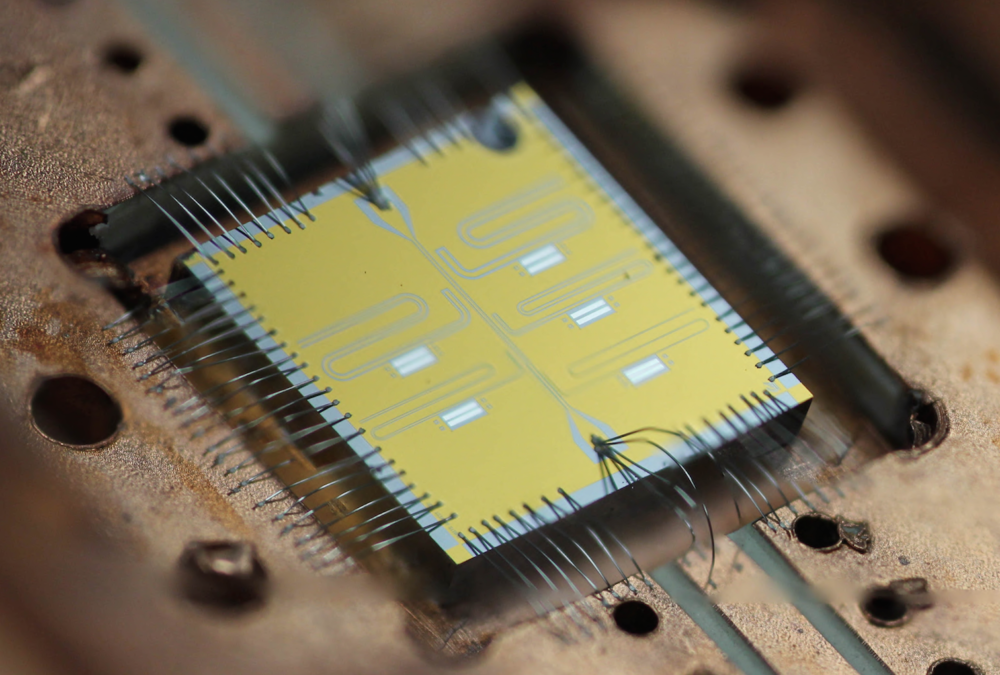Now on ASCR Discovery: High-performing Hybrid

Jarrod McClean and his Lawrence Berkeley National Laboratory colleagues want to simulate and predict the chemistry and properties of advanced compounds before scientists go into the lab to make them.
But they have a problem. Today’s high-performance computing (HPC) systems aren’t powerful enough to model materials with the detail and accuracy the researchers need: at the level of electron arrangements and interactions in molecules. Today’s classical computers with memory comprised of bits could take years to perform such calculations, even with the most powerful machines available.
Sufficiently powerful quantum computers – ones using the strange physics governing the subatomic to speed calculations – could do the job, potentially solving the problems McClean works on exponentially faster than classical HPC systems. But it will be years before large-scale quantum computers are a reality.
That frustration led McClean, a Luis Alvarez Fellow in Computing Science, and his colleagues in the lab’s Computational Chemistry, Materials and Climate Group to pursue a third course: yoking quantum processors with classical HPC systems into a hybrid computer. They’re developing algorithms – instructions, like recipes, computers follow to solve problems – that could capitalize on the combination.
“We focus on a way to take what the quantum device is best at and utilize it only for that piece and take the other pieces of the algorithm that are more mundane,” like standard math and decision-making, “and offload that to our already very powerful classical computers,” McClean says.
Each system doing what it’s best suited for “will let us reach the solution to these applications we’re interested in much sooner than if we waited for a quantum computer to be able to do all of it on its own.”
McClean described the research in a talk last fall at SC15, the international supercomputing conference in Austin, Texas.
In standard computing, data is binary, with each bit cast as either a 1 or a 0 and represented by switches or magnetic states. In comparison, quantum computing bits, or qubits, use electrons’ quantum properties to represent 1, 0 or both simultaneously, a state called superposition. Qubits also can be entangled, acting as if they’re connected although physically separated.
“You’re able to operate on this device while the bit is in that superposition of 0 and 1 to get both of the computations done” simultaneously, says McClean, a Department of Energy Computational Science Graduate Fellowship alumnus.
If researchers can harness the power of this solution superposition – a delicate task – quantum computers may be able to solve huge problems thousands of times faster than classical systems.
Part of the speedup comes from the very nature of quantum processors. For example, the quantum chemistry calculations McClean and his colleagues perform must account for the states, energy levels and interactions of electrons – a tricky task because under quantum physics electrons can be either waves or particles. Each electron also interacts with every other electron, creating a thorny many-body problem.
On a standard HPC system, such calculations are demanding and necessarily imprecise. But quantum processors use physics the problems are grounded in, making them well-suited to solve them. In other words, classical computers often struggle to simulate quantum systems, but quantum computers don’t because they’re quantum systems themselves.
McClean compares it to puppetry. In a sense, researchers program the quantum processor to behave as a controllable analog to the quantum molecular system they want to study. “Like a marionette puppeteer would make a puppet dance for them, you want (the analog quantum system) to dance” like the real system. “Then you ask your analogous system only interesting questions, like did it react or not? Does it have a lower energy? Is this the most stable configuration?”
Read more at ASCR Discovery, a website highlighting research supported by Department of Energy’s Advanced Scientific Computing Research program.
Image caption: This multi-qubit chip has five superconducting transmon qubits and associated readout resonators. When cooled to absolute zero, such a device can compute things like quantum simulations of advanced materials. Image courtesy of the Quantum Nanoelectronics Laboratory, Lawrence Berkeley National Laboratory.


